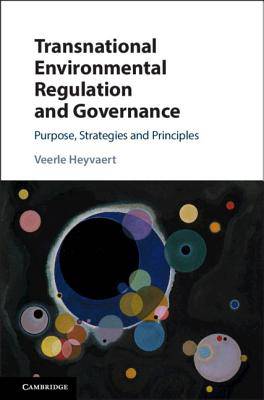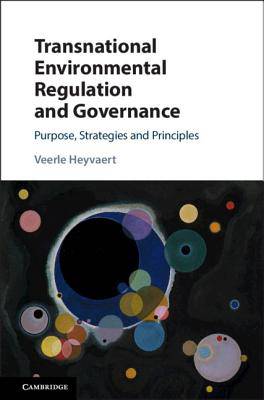
- Afhalen na 1 uur in een winkel met voorraad
- Gratis thuislevering in België vanaf € 30
- Ruim aanbod met 7 miljoen producten
- Afhalen na 1 uur in een winkel met voorraad
- Gratis thuislevering in België vanaf € 30
- Ruim aanbod met 7 miljoen producten
Zoeken
Transnational Environmental Regulation and Governance
Purpose, Strategies and Principles
Veerle Heyvaert
Hardcover | Engels
€ 139,95
+ 279 punten
Omschrijving
A large and growing proportion of contemporary environmental regulation is transnational, which means that it is impossible to understand environmental governance without a firm grasp of the nature of transnational environmental regulation (TER). In this illuminating work, Veerle Heyvaert offers readers a comprehensive discussion of TER, including analysis of international environmental agreements, regional and EU regulation, private environmental regulation, and governance networks, arguing that TER is highly diverse but sufficiently cohesive to allow the identification of shared characteristics that establish TER as a model of regulation. The book uncovers the key features of TER, and analyses the various intentions of TER regulators, TER's governance principles and compliance strategies, using a newly developed activity-based methodology for regulatory analysis. This book should be read by anyone seeking to understand the strengths and weaknesses of transnational environmental governance and its contribution to sustainability.
Specificaties
Betrokkenen
- Auteur(s):
- Uitgeverij:
Inhoud
- Aantal bladzijden:
- 312
- Taal:
- Engels
Eigenschappen
- Productcode (EAN):
- 9781108415743
- Verschijningsdatum:
- 24/01/2019
- Uitvoering:
- Hardcover
- Formaat:
- Genaaid
- Afmetingen:
- 229 mm x 163 mm
- Gewicht:
- 544 g

Alleen bij Standaard Boekhandel
+ 279 punten op je klantenkaart van Standaard Boekhandel
Beoordelingen
We publiceren alleen reviews die voldoen aan de voorwaarden voor reviews. Bekijk onze voorwaarden voor reviews.











